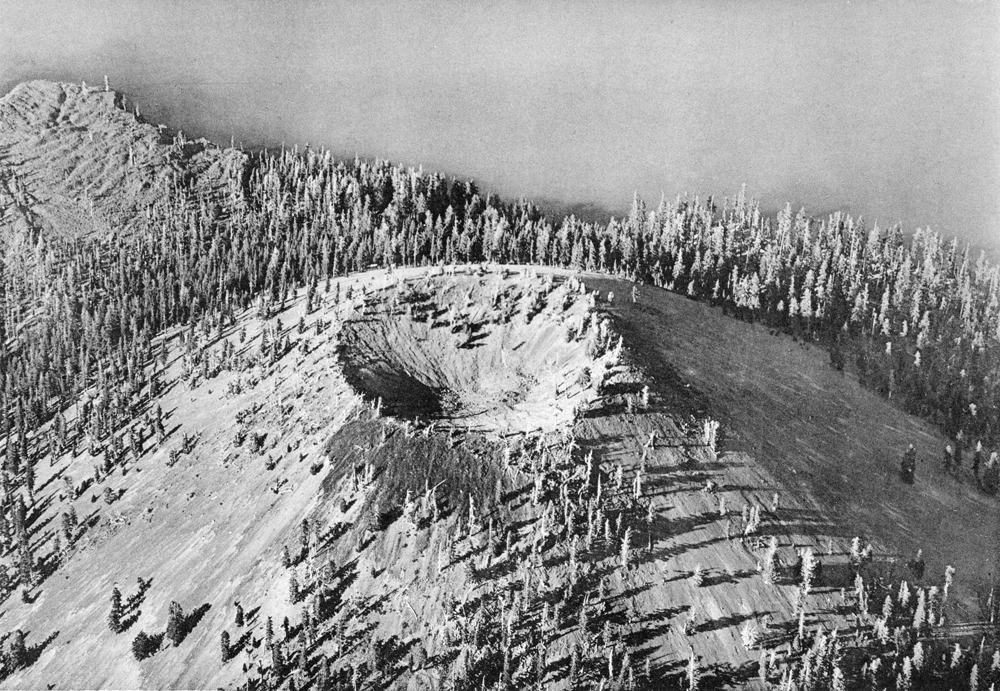The Geology of Crater Lake National Park, Oregon With a reconnaissance of the Cascade Range southward to Mount Shasta by Howell Williams
Post-caldera Eruptions
Wizard Island
Wizard Island (see plate 20) consists of a perfectly symmetrical cinder cone almost completely encircled by dark, rugged flows of lava. The summit of the cone rises 763 feet above the level of the lake, and the area of the cone and lavas exposed above water approximates a square mile. Were it not for the sparse covering of trees, one might suppose that the eruptions had only lately ceased, so fresh is the appearance of both the cone and the flows. Set in the placid blue waters of Crater Lake, the somber island leaves an indelible picture in the mind.
The cone. The cone itself is little more than 1/2 mile in diameter and consists chiefly of black, scoriaceous lapilli and blocks. Near the summit these are mixed with red and brown “cinders.” Fine ash is notably scarce. Though most of the fragments measure more than an inch across, there are few large pieces. Near the base of the cone bombs 2 feet in diameter may be found, and on the crater rim there are blocks of lava more than 6 feet in diameter. Well rounded bombs are exceptional. Most of the ejecta are angular or subangular and must have been blown out when practically solid. Some of the fragments were undoubtedly formed by explosive shattering of lava flows and temporary conduit plugs. Eruptions of Strombolian type characterized only the final stages of activity, for near the crater rim there is much agglutinate, indicating that the latest ejecta were still sticky enough when they fell to adhere to adjacent fragments.
Not all the cone consists of fragmental material. During its growth there were several subterminal eruptions of lava. These were scarcely more than an oozing through the sides of the cone.
At the summit there is a bowl-shaped crater, approximately 300 feet across and go feet deep (plate 20). On its floor, a patch of black, scoriaceous lava, crowded with foreign inclusions, represents the filling of the central conduit.
The main lava Paws. After the cone had been built, lava escaped from fissures at the base. Soundings to the east of Wizard Island suggest that flows from this source cover an area of approximately 3 square miles, but whether these hidden lavas were erupted after the building of the cinder cone, or, as seems more probable, form the basement, cannot be determined. The visible post-cinder-cone flows spread chiefly toward the west, in which direction they extend for 1/2 mile. The tongue of lava projecting into Skell Channel is marked by concentric curved ridges up to 60 feet in height, separated by troughs many of which are occupied by jade-green pools floored with diatomaceous earth. As seen from the Watchman, the wavelike surface of the flow is quite distinct (plate 21, figure I). The lava composing this western flow is of the block type. As it moved, the surface layers broke into sharp-edged, angular fragments, many more than 10 feet across and some even 30 feet in maximum dimension, with smooth, glassy skins.


